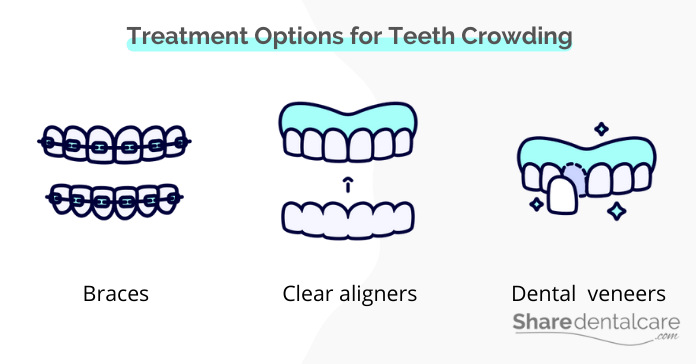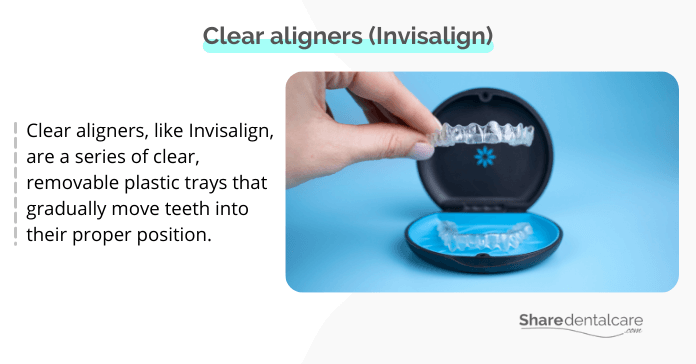If you are one of the people who suffer from lower teeth crowding, you may be looking for a treatment. Crowded lower teeth can be difficult to clean and can lead to problems with your bite. In this blog post, We will discuss the different lower teeth crowding treatments available to you. We will also talk about the benefits and drawbacks of each treatment option.
What Causes Lower Teeth Crowding & What’re Treatment Options?
There are many factors that can cause lower teeth crowding. One of the most common causes is genetics. If your parents or grandparents had crowded teeth, you may be more likely to have them as well. Other causes include:
- Bad Childhood habits: Thumb sucking, tongue thrusting, or using a pacifier for an extended period of time can all cause lower teeth crowding.
- The early loss of baby teeth: If baby teeth are lost too early, the permanent teeth may begin to come in before there is enough space.
- Over-retained baby teeth: If baby teeth are not lost when they should be, it can cause dental crowding.
- Injuries to the face or mouth: An injury to the face or jaw can cause teeth to become misaligned.
- Misaligned jaws: If your upper and lower jaws are not properly aligned, it can cause teeth crowding.
- Small jaw size (genetics): Some people are born with small lower jaw or large teeth, which can cause overcrowded bottom teeth.
The good news is that there are many treatment options for lower teeth crowding, including:
- Braces
- Clear aligners
- Dental veneers

Complications of Untreated Dental Crowding
If dental crowding is left untreated, it can lead to several complications, including:
- Tooth decay: Crowded teeth are difficult to clean, which can lead to tooth decay.
- Gum disease: Crowded teeth can also trap bacteria and food particles, which can cause gum disease.
- Tooth loss: In severe cases, dental crowding can cause tooth loss due to decay or gum disease.
- Difficulty chewing: Crowded teeth can make it difficult to chew properly, which can lead to digestive problems.
- Jaw pain: Crowded teeth can put pressure on the jaw, which can cause pain.
- Lower your self-esteem: Crowded teeth can lower your self-esteem and confidence.
Treatment of lower teeth crowding can help to avoid these complications.
Treatment Options for Lower Teeth Crowding
If you are suffering from lower teeth crowding, there are many treatment options available to you, depending on the severity of your crowding (mild, moderate, or severe). Your orthodontist can determine the severity of your crowding by doing an oral examination and taking X-rays. They will also ask you about your medical history and any previous orthodontic treatment you have had. Based on this information, they will develop a treatment plan specific to your needs.
The treatment options for lower teeth crowding include:

Braces
Braces are the most common treatment for lower teeth crowding. They work by gradually moving the teeth into their proper position. Braces consist of metal brackets that are glued to the teeth, and a wire that is threaded through the brackets. The wire is tightened over time to move the teeth. Braces can be worn for 12-24 months, depending on the severity of the crowding.
Braces are an effective treatment for mild, moderate, and severe lower teeth crowding. However, they are also the most visible treatment option. Besides, they can be difficult to keep clean and require special care when eating.
Clear Aligners
Clear aligners, like Invisalign, are a series of clear, removable plastic trays that are custom-made to fit your teeth. They work by gradually moving the teeth into their proper position. They are worn for 20-22 hours per day and need to be replaced every two weeks. Clear aligners are typically worn for 12-18 months, depending on the severity of the crowding.
Clear aligners are a less visible alternative to braces. They are virtually invisible and can be removed for eating, drinking, and brushing your teeth. Clear aligners are an effective treatment for mild to moderate teeth crowding. However, they are not recommended for severe dental crowding. Also, they can be more expensive than other treatment options.
You can read more about Invisalign for severely crowded teeth.

Dental Veneers
Dental veneers are thin, custom-made shells that are bonded to the front of your teeth. They can be made from porcelain or composite material. Veneers are used to improve the appearance of your teeth and can be used to treat mild lower teeth crowding.
Dental veneers can be used to treat minor teeth crowding. However, they are not recommended for moderate and severe teeth overcrowding. Braces and clear aligners are the best way to straighten teeth and improve your bite. Dental veneers can’t improve your bite. Veneers are usually used as a cosmetic procedure, not an orthodontic treatment.
Surgery
Jaw surgery, also known as orthognathic surgery, is typically only recommended for severe dental crowding that cannot be corrected with braces or clear aligners. Surgery involves moving the teeth and jaw into their proper position. It is a major procedure that requires a lengthy recovery time.
You can read more about bottom front teeth crowding.
Lower Teeth Crowding Treatment – Conclusion
Lower teeth crowding can cause problems such as difficulty chewing, and jaw pain, and lower your self-esteem. Many treatment options are available to you, depending on the severity of your crowding. Braces and clear aligners are the most common treatments for lower teeth crowding. Dental veneers can be used to treat mild crowding to improve the appearance of teeth.
If you think you may have lower teeth crowding, talk to your orthodontist. They will be able to develop a treatment plan that is specific to your needs.